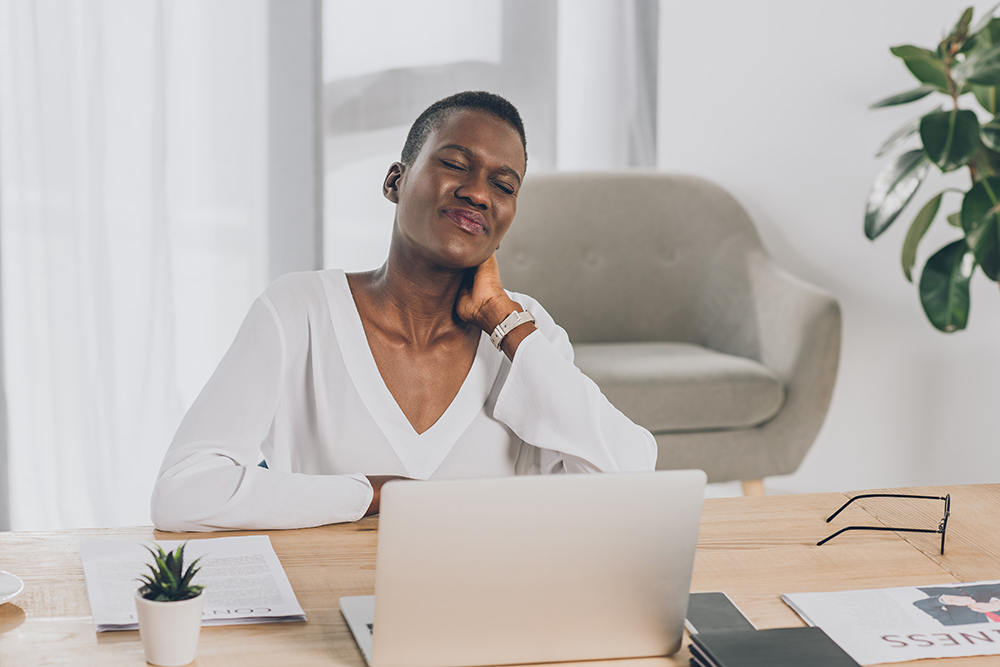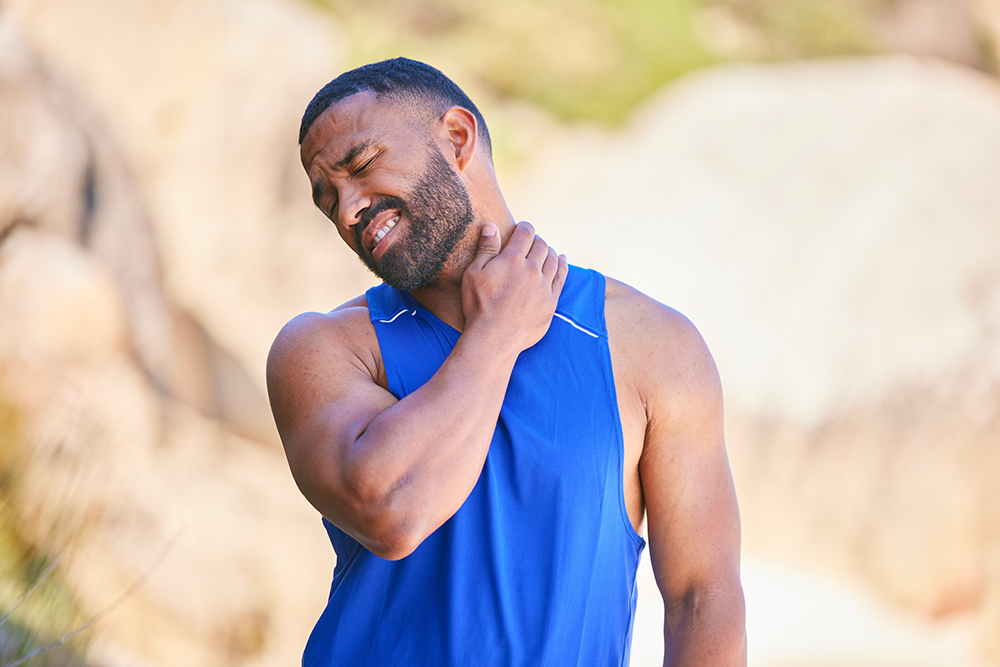Cervicogenic headaches (CGHs) typically stem from neck pain. If you have this condition, you may feel pain on one side of your head. You may also have difficulty moving your neck or head. Some common causes of CGHs include arthritis and strained muscles in your neck.
Physical therapy exercises can help address CGHs because they focus on strengthening your injured neck muscles. Strengthened neck muscles may reduce the pressure on the tight nerves in your neck. This reduced pressure can reduce the pain in your neck and head.
How to perform 5 PT exercises that address CGHs
A physical therapist may recommend the following specific physical therapy exercises to treat CGHs:
- Lateral flexion exercise — Researchers have found that lateral flexion exercises may decrease neck pain, which can reduce pain from your CGH. To perform a lateral flexion exercise, move your right ear toward your right shoulder by tilting your head. Stay in this position for 30 seconds. Do the same process on your left side. Do these two processes several times. To strengthen your neck muscles, try doing the steps while placing your hand on the side of your forehead and applying light resistance. When placing your hand on the side of your forehead, stay in the position for 10 seconds instead of 30 seconds.
- Rotation exercise — A rotation exercise can help reduce pain from a CGH by increasing the mobility of your neck muscles. To perform a rotation exercise, stand or sit upright. Turn your head to your right. Look behind your shoulder for 30 seconds; then go back to a neutral position. Turn your head to the left, and repeat the same steps. Do these steps for both your left side and your right side several times. For increased strengthening, put your right hand on the right side of your forehead. Repeat the same steps using your right side while applying light pressure with your hand to increase resistance, but stay in the position for 10 seconds instead of 30 seconds. Then put your left hand on the left side of your forehead, apply light pressure to increase resistance, and repeat the steps just mentioned.
- Shoulder blade exercise — To perform a shoulder blade exercise, sit or stand upright. Slowly stretch your shoulders backward and your chest forward. Stay in this position for five seconds and then return to a neutral position. Repeat these steps 10 times.
- Neck stretching exercise — A neck stretching exercise can help reduce pain from a CGH by increasing the mobility and flexibility of the muscles on both the front and back of your neck. To stretch the muscles on the back of your neck, slowly place your chin on your chest; then hold that position for 30 seconds. Next, slowly move your chin back to a neutral position. To stretch the muscles on the front of your neck, slowly lean your head back and look up at the ceiling for 30 seconds.
- Chin tuck exercise — A chin tuck exercise may reduce your neck pain and thus your CGH-based pain. To perform a chin tuck exercise, sit upright and keep your chin up. Then put a finger on your chin and move your head straight back. Stay in this position for five seconds and then return to a neutral position. Repeat these steps 10 times.
3 PT techniques that can also help address CGHs
If left untreated, cervicogenic headaches may get worse. Light exercises alone may not be enough to treat every case of neck pain that’s causing CGHs. Physical therapists will typically combine exercises with other PT techniques to help you address this issue. Here are some common techniques that physical therapists often combine with exercises to help treat CGHs:
- Manual therapy — One manual therapy technique that physical therapists offer is therapeutic stretching. In therapeutic stretching, physical therapists can target tight neck muscles. This technique can help improve the range of motion in your neck. It can also reduce pinched nerve pain in your neck, if applicable, which is a common cause of CGHs. Therapeutic stretching is important because it can not only help your neck, but it can also improve your posture.
- Aquatic therapy — In aquatic therapy, your physical therapist will guide you through exercises in a heated pool. The water in the pool helps hold you up and can reduce the weight on your neck. This reduced pressure can help you improve the strength of your neck muscles without placing more stress on your neck. Also, the hydrostatic pressure of the water pushes against your body, which can reduce any swelling in or around your neck.
- Spinal decompression — Another physical therapy technique that can help treat CGHs is spinal decompression. In this technique, your physical therapist will use a manual lumbar traction table to stretch your spinal muscles while you stay in a comfortable position. This technique can help reposition your spine, which can improve your posture and reduce the likelihood of you having neck pain in the future. For example, if you have improved posture while sitting at your desk, then the muscles in your upper back may be less stiff. This reduced stiffness may make it easier for you to move your shoulders and neck.
Lattimore PT can help treat CGHs through PT techniques
In need of treatment for headaches? At Lattimore PT, our team values compassion, friendliness and high-quality patient care. Our hands-on approach to physical therapy involves our licensed physical therapists listening to you to meet your needs.
To treat cervicogenic headaches, we offer services such as aquatic therapy and manual therapy. A physical therapist will work with you to create a personalized treatment plan that includes the physical therapy techniques most relevant to your CGH.
Contact our team today for more information about physical therapy for cervicogenic headaches or to schedule an initial appointment.


